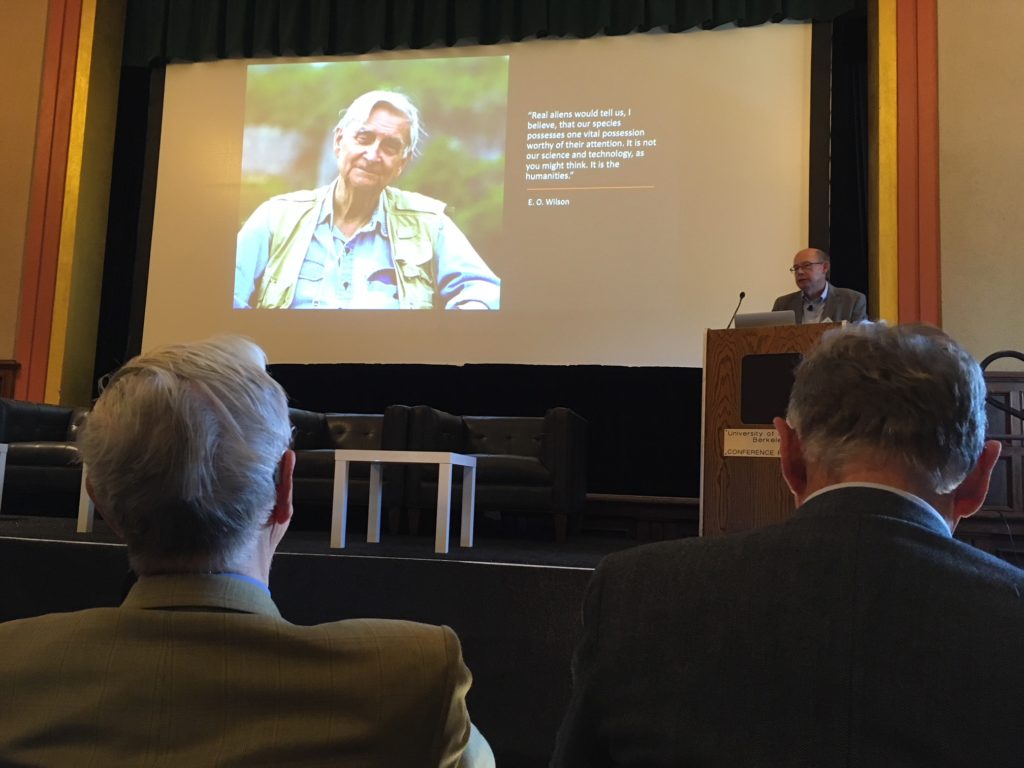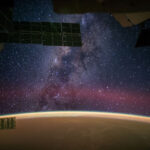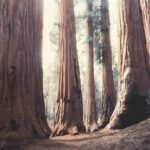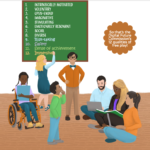
Real aliens would tell us, I believe, that our species possesses one vital possession worthy of their attention. It is not our science and technology, as you might think. It is the humanities. —E.O. Wilson
I attended Half-Earth Day 2019 at UC Berkeley on Monday. The last session of the day was a conversation between E. O. Wilson—biologist, naturalist, writer—and Jack Dangermond, founder and president of Esri (Environmental Systems Research Institute), a geographic information systems (GIS) software company. Esri’s mapping software enables the planetary biodiversity mapping efforts of the Half-Earth project. I happened to be sitting directly behind Wilson and Dangermond while Island Press president David Miller introduced them. Island Press has published several of E. O. Wilson’s books including his memoir, Naturalist. Miller gave us a preview of a graphic adaptation they’re currently working on (we have to wait until 2020) to make E. O. Wilson’s work more accessible to a new generation.
Earlier in the day I participated in the very hands-on Half-Earth Project Educator Ambassador Institute. A project of the E. O. Wilson Biodiversity Foundation, they have created some extraordinary education resources, including a seven-unit standards-based curriculum designed to inspire students. Scroll this page and you’ll find the link to download the Life on Earth curriculum. Clicking on the link will take you to iTunes (sorry, PC folks) and the Life on Earth page that includes the 7-unit “textbook” in iBook format with embedded videos, and the accompanying iTunes U course—Biology: Life on Earth. All resources are free. Definitely a great example of Tech for Good. Contrary as I am, I’m starting with Unit 7—Guided Tour of Ecosystems because one of the educators I met pointed out that this unit includes an entire section with videos and interactive maps of Gorongosa National Park in Mozambique. Piotr Naskrecki, the Associate Director of the E.O. Wilson Lab, gave a presentation on the history of this park which has become an extraordinary example of restoration (watch the short video).
How does this relate to Mindful Digital Life? Lately I’ve noticed that many of the people I admire today describe themselves as “naturalist” (for example: Daniel Dietrich, a local NorCal human). I believe grounding our lives deeply in nature can give us, our children, and grandchildren a strong foundation for a Mindful Digital Life (and a lot of research today supports this belief—e.g., see The Nature Principle by Richard Louv). Naturalists are guiding me in strengthening my understanding and awareness of the web of life. E. O. Wilson is the naturalist’s naturalist. At 90 years, he has inspired several generations of biologists and today, with other inspired partners, he is pioneering efforts to preserve and protect biodiversity on Earth. I’m glad my path has crossed with his.
Circling back to the opening E. O. Wilson quote on “the humanities”…I first heard Gary Snyder’s poetry when he was the poet in residence at the University of Cincinnati in the 1970s. Listening to Gary read his poems that night changed my life. I had no idea that poetry could bring a forest alive in my mind’s eye and heart’s mind, until I heard Gary read that night.
PINE TREE TOPS
in the blue night
frost haze, the sky glows
with the moon
pine tree tops
bend snow-blue, fade
into sky, frost, starlight.
the creak of boots.
rabbit tracks, deer tracks,
what do we know.
—Gary Snyder


